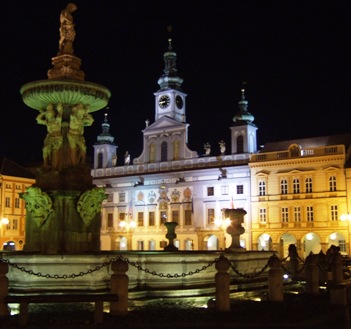Old Europe
Southern Bohemia's dark past lies buried in a Jewish cemetery.
 Southern Bohemia is at the heart of what George W. Bush called the "Old Europe” part of the Czech Republic. The Czechs are (rightly) admired as the most progressive of Eastern Europeans. They had a functioning, liberal democracy in the 1920s and 1930s, heralded the dissolution of the Soviet Empire with their "Prague Spring" of 1968, and again switched, bloodlessly, two decades later to democracy with their "Velvet Revolution.”
Southern Bohemia is at the heart of what George W. Bush called the "Old Europe” part of the Czech Republic. The Czechs are (rightly) admired as the most progressive of Eastern Europeans. They had a functioning, liberal democracy in the 1920s and 1930s, heralded the dissolution of the Soviet Empire with their "Prague Spring" of 1968, and again switched, bloodlessly, two decades later to democracy with their "Velvet Revolution.”
And Israelis also remember, with deep appreciation, their concrete support, in the form of the arms sales (okayed by Moscow), which were crucial to Jewish sovereignty and victory, in 1948 (the US at the time provided vital political support—but neither bullets nor guns).
And so a swing through Southern Bohemia comes as a bit of a jolt. About an hour's drive from České Budějovice (Budweis in German), just off an unmarked dirt road lies a small, unsignposted pre-1939 Jewish graveyard, snuggling inside a walled compound on a green wooded hillside. The walls are waist-high, made of black and brown stones. Just outside the compound is a lone, small arched stele marking the grave of someone—perhaps a child—deemed unworthy of inclusion in the compound. Inside, most of the gravestones, of Freunds and Hertzes and Finkels, are from the nineteenth century. The older ones are indecipherable, the lettering—invariably in Hebrew—eroded. The most recent is from 1936. The graveyard is completely intact. Perhaps the Nazis never spotted it; perhaps they didn't care. They preferred live Jews.
These they found in České Budějovice, a small, gray town with an impressive, wide Baroque square. The flail of war passed over the town's buildings, as it did over Prague, with its intact cobbled streets and spires. But not over its Jews. In 1921 the census-takers, the town's encyclopedia tells us, registered some one thousand four hundred fifty of them living side-by-side with about forty thousand Christians (about 15 percent of them Germans).
Some apparently fled just before or just after the Nazis occupied the rump Czechoslovak provinces two decades later. But the remaining nine hundred or so were rounded up in 1942 and deported, initially to Teresienstadt, then, most of them, on to Auschwitz and Buchenwald and other grim places. Perhaps several dozen survived. But none or almost none appear to have returned to České Budějovice. The town has no Jewish community; perhaps there are one or two Jews living there discreetly in the narrow streets that are being refurbished after the forty-year, dry and ugly spell of Communist rule.
But the passion of České Budějovice's Jews did not begin with the Nazis, which may partly explain why Jews have not enthusiastically flooded back.
In 1505 the local authorities accused seven Jews of abducting and murdering a Christian boy for ritual purposes. The seven were arrested and tortured. None confessed. Nonetheless, after a nod from the local magnate, they were burnt at the stake. Another thirteen Jews, including several women, suspected of being accomplices, were given a lighter sentence—and drowned in the waters of the Vltava River. The town's remaining Jews were expelled—though, according to the encyclopedia, some of the Jewish children (of those put to death? of the expellees? some of each?) were "taken" by the authorities and brought up as Christians.
Thereafter, for the next three hundred forty years, Jews were barred from living in České Budějovice. They began to trickle back after the liberalizing revolutions and reforms that swept Europe in 1848. That return ended, as it were, in 1942. At the site of the town's nineteenth-century synagogue, presumably destroyed by the Nazis, stands a small statue shaped like a combo hand and menorah with seven fingers.
Old Europe, as George W. said.
(Photo by Ecelan)
